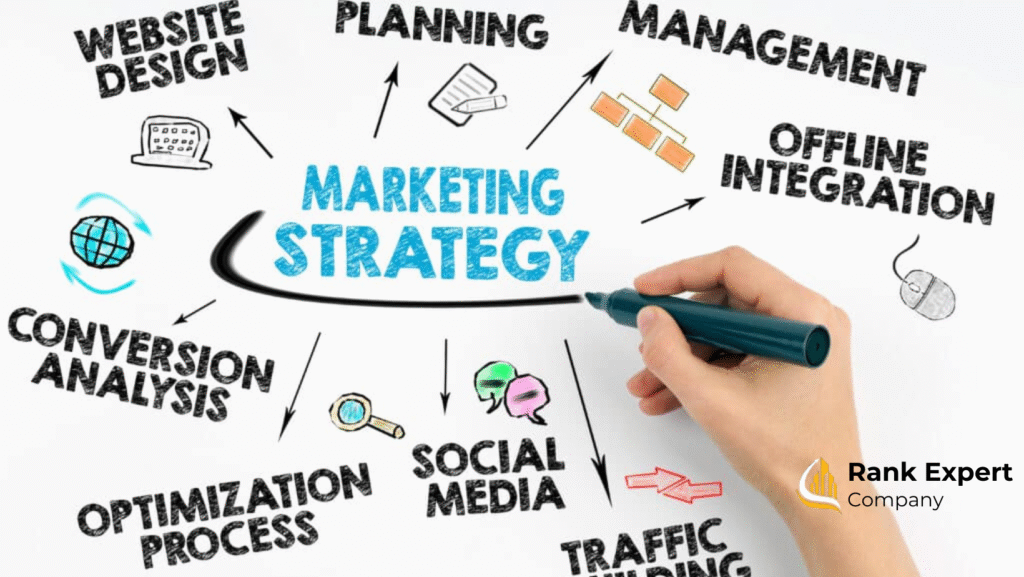In today’s digital-first world, learning how to create effective marketing strategies for your business is essential for long-term growth and competitiveness. Whether you’re a startup or a seasoned brand, a solid marketing plan allows you to reach the right audience, increase brand awareness, and drive sustainable revenue.
In this guide, we’ll explore step-by-step how to build a result-driven marketing strategy, with real-world insights and tools to help you succeed.
Why a Marketing Strategy Matters
A marketing strategy is more than a to-do list — it’s a roadmap that aligns your business goals with your promotional efforts. Without a clear marketing plan, your campaigns can lack direction, leading to wasted time and money.
Benefits of a strong marketing strategy include:
- Clear target audience identification
- Better return on investment (ROI)
- Improved customer engagement
- Consistent brand messaging
- Competitive edge in your market
Step 1: Define Your Business Goals
Every successful marketing strategy starts with well-defined goals. These should be SMART (Specific, Measurable, Achievable, Relevant, Time-bound).
Examples of marketing goals:
- Increase website traffic by 30% in 3 months
- Generate 500 new leads from organic search
- Grow social media followers by 10,000 by year-end
Align these goals with your overall business objectives to keep your team focused.
Step 2: Understand Your Target Audience
To market effectively, you need to know who you’re speaking to. Use customer personas to profile your ideal customers.
Key data points to collect:
- Demographics (age, gender, location)
- Pain points and challenges
- Online behavior
- Preferred channels (social media, email, search engines)
Tools like Google Analytics, social media insights, and customer surveys can help you gather this data.
Step 3: Conduct Market and Competitor Research
Competitor analysis helps you understand what works and what gaps you can fill.
Look at:
- Their content marketing strategy
- SEO keyword rankings
- Paid advertising efforts
- Social media engagement
Use tools like Semrush, Ahrefs, and Google Trends to get a competitive edge.
Step 4: Choose the Right Marketing Channels
Your strategy should include the right mix of digital and traditional marketing channels, depending on your audience and industry.
Popular channels to consider:
- Search engine optimization (SEO)
- Content marketing
- Social media marketing (SMM)
- Pay-per-click advertising (PPC)
- Email marketing
- Influencer marketing
Tip: Start with the platforms where your audience is already active and gradually expand.
Step 5: Develop a Unique Value Proposition (UVP)
What makes your business stand out? Your UVP should clearly explain the benefit of your product or service and why customers should choose you over competitors.
Example: “Affordable cloud storage for freelancers with zero hidden fees.”
Make your UVP the cornerstone of your branding, ads, and messaging strategy.
Step 6: Create a Content Marketing Plan
Content is still king in 2025. A well-thought-out content marketing strategy builds trust, boosts SEO, and nurtures leads.
Content types to include:
- Blog posts
- Videos
- Infographics
- Case studies
- Ebooks and whitepapers
Make sure your content addresses search intent and includes long-tail keywords, LSI keywords, and compelling CTAs (calls to action).
Step 7: Set a Realistic Budget
A common mistake small businesses make is either overspending or underfunding their campaigns. Allocate budget across your chosen channels based on projected ROI.
Pro tip: Start small, track performance, and scale what works best.
Step 8: Track Performance and Optimize
Use marketing analytics tools to monitor your strategy’s performance. Focus on KPIs like:
- Conversion rate
- Customer acquisition cost (CAC)
- Return on ad spend (ROAS)
- Email open/click rates
- Organic traffic growth
Tools like Google Analytics 4 (GA4), HubSpot, and Meta Business Suite can help.
Always be testing. A/B test different headlines, visuals, and offers to refine your approach continuously.
Bonus: Tips to Stay Ahead in 2025
- Leverage AI tools for automation, personalization, and content creation
- Focus on mobile-first experiences and page speed
- Prioritize local SEO if you’re targeting nearby customers
- Use interactive content (polls, quizzes, webinars) to boost engagement
- Stay updated with Google algorithm changes
Final Thoughts
Learning how to create effective marketing strategies for your business isn’t just about tactics—it’s about aligning your vision, goals, and execution. By following the steps outlined above and staying adaptable, you’ll position your brand for consistent, long-term success.
Remember, the best marketing strategies evolve. Keep learning, testing, and refining.
Frequently Asked Questions (FAQs)
What is the most important part of a marketing strategy?
Understanding your target audience and aligning your strategy to meet their needs is the foundation of any successful plan.
How often should I update my marketing strategy?
At least once a quarter or after major business or market changes.
Can small businesses compete with big brands?
Yes. With a niche focus, smart budgeting, and digital marketing, small businesses can compete effectively.



